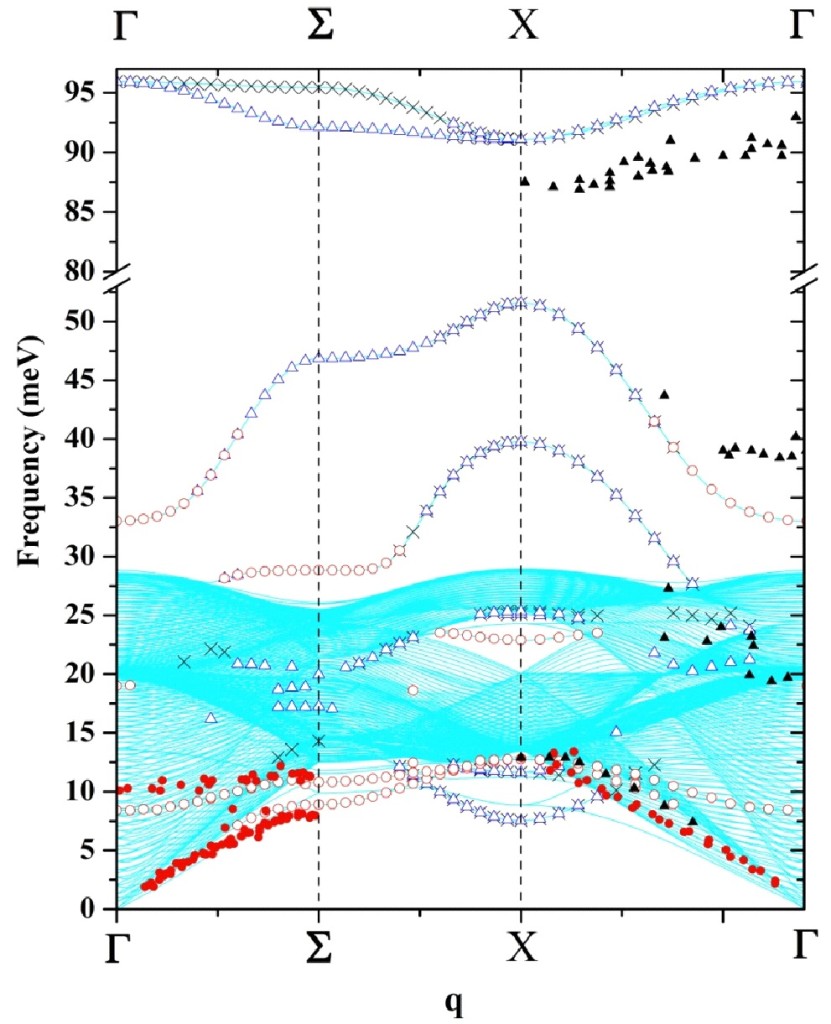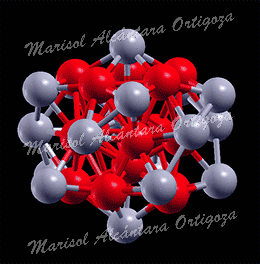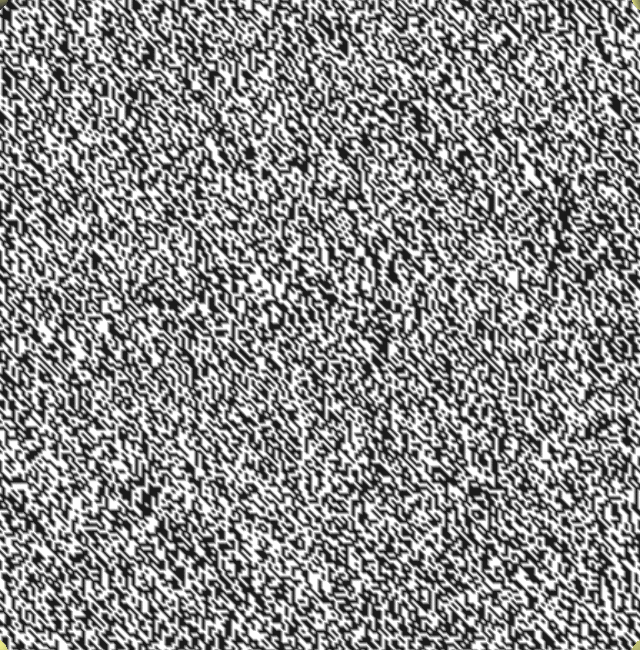
Calculated surface-phonon dispersion curves a for the unreconstructed c(2×2)- N/Cu(001). Figure taken from Phys. Rev. B 81, 115465 (2010)
[Phys. Rev. B 81, 115465 (2010)] Controlling and exploiting self-ordering of materials requires us to understand the structure at the atomic level and the mechanism that drives the nanoscale self-assembling. The result of adsorbing nitrogen on the Cu(001) surface constitutes one example of nanoscale self-ordering as it forms squared 6×6 nm2 N-patches on top of the Cu surface. Such structure of N-patches and clean Cu channels is a prototype of templates for functional magnetic or catalytic nanoparticles.
In reference [1], via total energy calculations, we have revealed that the model for the arrangement of N on Cu(001), implying a large rumpling of the Cu surface is an incorrect interpretation of STM measurements. Instead, the lowest-energy structure was confirmed by its dynamical stability and its ability to replicate the vibrational properties depicted by experiment. We have shown also that the common notion that self-ordering results from the manner in which the stress caused by adsorbates is relieved cannot explain the case of N on Cu(001). Namely, it was believed that N-free regions exist and undergo lateral displacements in order to compensate the strain within the N-patches. We have shown that such as idea is not supported by a consequential N-coverage dependence of the vibrational properties. Should stress be responsible for the self-assembling, smaller patches (resulting from smaller N coverage) would have a modulated vibrational spectrum (for short wavelengths). Yet, measurements and our calculations showed that the vibrational spectrum is independent on the coverage and practically identical to that of a totally N-covered Cu(001) surface, thus implicating that stress cannot be the leading mechanism of self-assembling of this system.
References:
1. E. Z. Ciftlikli, L. V. Goncharova, B. J. Hinch, M. Alcántara Ortigoza, S. Hong, T. S. Rahman; “Vibrational dynamics of a c(2×2) phase induced by nitrogen adsorption on Cu(001)“; Phys. Rev. B 81, 115465 (2010)


